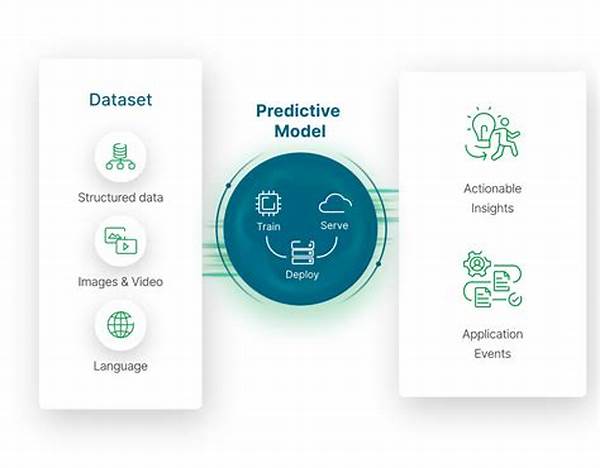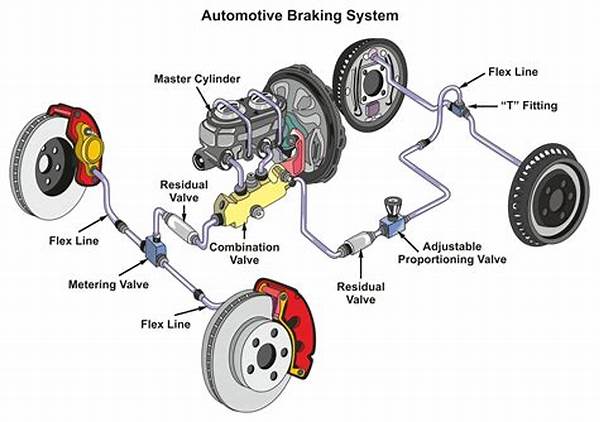Predictive Modeling For Suspension Systems
In the contemporary automotive industry, engineering efforts are increasingly directed towards enhancing vehicle performance and safety. One crucial component in this regard is the suspension system, which plays a pivotal role in ensuring ride comfort and vehicle stability. Predictive modeling for suspension systems emerges as a sophisticated approach to anticipate performance metrics and improve design efficiency. By leveraging advanced computational techniques, engineers can simulate and analyze the dynamic behavior of suspension systems, leading to robust and innovative solutions.
Read Now : Memorable Brand Experiences Through Design
Advancements in Predictive Modeling for Suspension Systems
Suspension systems have come a long way, and the fusion with predictive modeling is like a match made in engineering heaven. Imagine having a crystal ball that predicts how a car will ride under various conditions — that’s essentially what’s happening with predictive modeling for suspension systems. Engineers are not just guessing anymore; they’re crunching numbers and running complex simulations to see how different designs will perform before they even hit the road. With this tech, they dive deep into the nitty-gritty of how suspensions will handle bumps, turns, and all that jazz. In a world where everyone wants a smoother ride, this predictive tech is like having a GPS for engineering decisions, guiding the way to smarter, safer, and more efficient cars. It’s revolutionizing the way vehicles are designed, making them more adaptable to diverse driving scenarios while boosting comfort and safety, without the trial-and-error approach of yesteryears.
How Predictive Modeling for Suspension Systems Transforms Design
1. Imagine tweaking your ride as if it were a video game—predictive modeling for suspension systems lets engineers do just that, without even touching a wrench.
2. It’s basically the behind-the-scenes hero, doing the heavy lifting so that when you hit a speed bump, it doesn’t hit back quite as hard.
3. The tech is changing the game quicker than last night’s viral TikTok, making car designs slick and performance spot-on.
4. It’s like having a sixth sense, where engineers can foresee how those suspensions act in the wild, saving time and cash in the long run.
5. With predictive modeling, ‘trial-and-error’ is so yesterday—now it’s all about ‘trial-and-awesome outcome’.
The Future of Suspension Systems with Predictive Modeling
Man, suspension systems are getting a serious upgrade thanks to predictive modeling. Picture this: cars of the future that can adjust their suspension settings in real-time based on the road ahead. Yep, that’s where we’re headed with this technology. Predictive modeling for suspension systems isn’t just planning for tomorrow; it’s gearing up for a future where cars are just as smart as the smartphones in our pockets. This level of smart tech means engineers can provide feedback almost instantly, making vehicles that adapt like a chameleon on a plaid shirt. On top of killer comfort and safety, this predictive approach is equally about sustainability, ensuring vehicles are not just a ride but an experience.
Predictive modeling for suspension systems means we’re looking at less wear and tear on our roads and a more efficient way to travel. As these innovative systems evolve, they’re not just talking the talk but walking the walk to transform our commutes. This isn’t some far-off dream anymore. It’s reality knocking on the automotive world’s door, promising rides that are smoother, smarter, and just downright cool.
Why Predictive Modeling for Suspension Systems is a Game-Changer
1. Predictive modeling for suspension systems is seriously leveling up the car game, and it’s nothing short of epic.
2. Engineers are like car whisperers now, using data to make rides smoother than a perfectly brewed latte.
3. Seriously, who knew math could lead to rides that feel like you’re cruising on clouds?
4. It’s about making smarter decisions faster, saving dough and dodging those wild guess games.
Read Now : How Often To Rotate Tires On Tucson
5. Innovative and intuitive, it’s like creating a playlist where every song is a banger and each drive is a winning track.
6. What used to take months of trial is now a data-driven breeze, proving that car design has finally joined the tech party.
7. Trust, predictive modeling isn’t just the future—it’s writing the history of better suspension systems today.
8. It’s that secret sauce making cars cooler, safer, and more mind-blowingly efficient than ever.
9. If your ride doesn’t have this tech in the pipeline, it’s missing out on being the ultimate road warrior.
10. So, buckle up, because predictive modeling for suspension systems is just getting warmed up.
Real-World Applications of Predictive Modeling for Suspension Systems
Alright, so let’s get real about how predictive modeling for suspension systems is shaking up the automotive scene. It’s way more than just some geeky computer stuff. Automakers use this tech to simulate how a car’s suspension might cope with everything from cruising down the smoothest boulevards to tackling rugged, off-road trails. Before your car even hits the production line, it’s been tested a bazillion times in the virtual world to make sure the ride is all smooth and no stress. This means no more crossing fingers and hoping everything works out. Instead, engineers are dropping hardcore data to make these calls, ensuring the ride is top-notch.
It’s like replacing your abuela’s secret sauce with a tried-and-tested recipe that’s guaranteed to wow every time. And yeah, it’s not just about comfort and handling, but about making these rides safer and more efficient. Whether you’re taking a Sunday drive or dodging potholes on a Monday morning, predictive modeling for suspension systems means your ride’s got your back. It’s all about kicking out old-school trial-and-error methods and making way for data-driven decisions that put us in the fast lane to better driving experiences.
Bringing Predictive Modeling for Suspension Systems to the Masses
Yo, when we get to the nitty-gritty of making predictive modeling for suspension systems a thing for everyone, it’s a wild mix of science meets cool tech. Engineers are all in, using it to tweak every little detail in a car’s suspension like they’re crafting the next Grammy hit. We’re talking precision down to the smallest detail to make sure that ride is smoother than silk. They’re not just guessing here; it’s all about running simulations that lay out the whole story of how a car feels on the road. Think of it as the backstage pass to the concert of future tech where every move is plotted, every scenario tested, and every ride perfected. It’s wild because this tech revolutionizes how cars are made, doing away with the old ways of trial-and-error. Predictive modeling for suspension systems means rides are not only built for today’s roads but are ultra-prepped for tomorrow’s journeys.
And get this, as more brands catch on, we’re gonna see cars being fine-tuned like never before. Imagine the feel of a luxury car without the luxury price tag, all thanks to the wizardry of predictive modeling. It’s just the tip of the iceberg, folks. We’re on the brink of a golden age in automotive comfort and efficiency, where predictive modeling for suspension systems leads the charge in redefining what a top-tier ride feels like. It’s all about data swagger and precision, pushing the ride revolution forward in ways we only dreamed of before.



